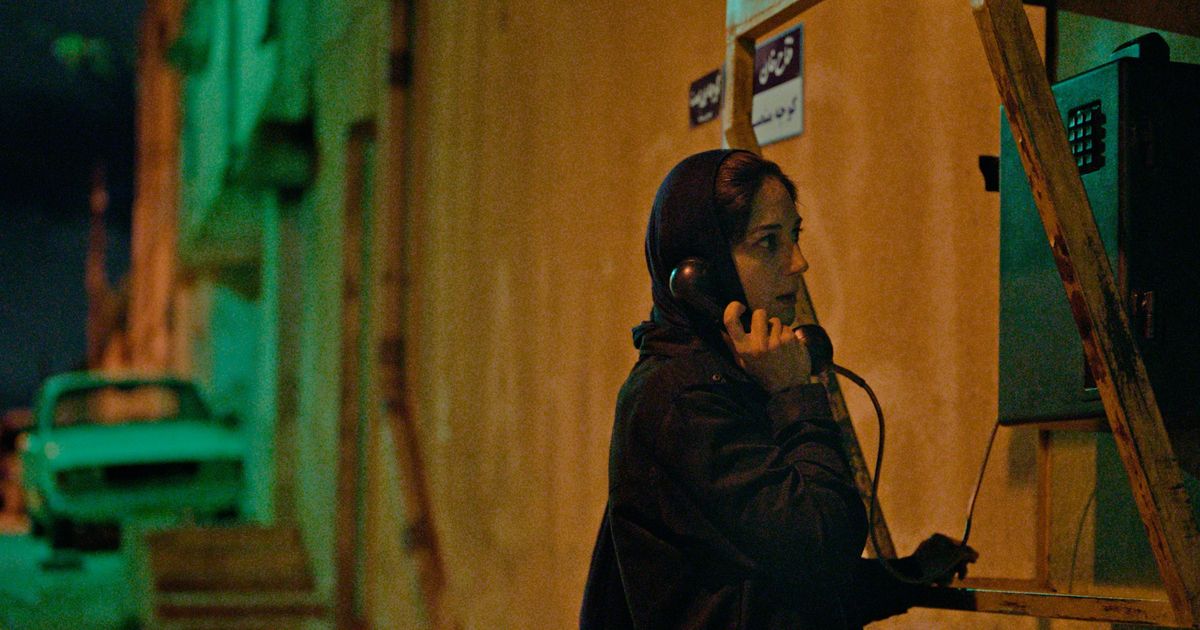Around the time when Donald Trump was elected president in 2016, someone on Twitter posted something to the effect that we can no longer tiptoe around the facts in front of us: “Everything is political now.”
This thought, which turned out to be pervasively true, again sprang to mind after watching “Holy Spider,” the taut new film noir loosely inspired by the case of Saeed Hanaei, the serial killer who murdered 16 female sex workers in Mashhad, Iran, between 2000 and 2001. That’s because it raises a number of questions many are asking right now.
For example, is a true crime-adjacent drama like this one — or other recent ones such as “Dahmer — Monster: The Jeffrey Dahmer Story” or “BlacKkKlansman” — beholden to certain facts or even a political agenda in its storytelling?
Transparently, “Holy Spider” does take some liberties with the truth, as its filmmaker Ali Abassi, an Iranian exile based in Copenhagen, candidly admitted. But with consideration and effectively, especially when you think about it outside the more rigid expectations of true crime dramas.
The film follows fictionalized journalist Rahimi (Zar Amir-Ebrahimi) who enters Iran’s holy city of Mashhad from Tehran to investigate the murders. The first few scenes of the film crystallize what it’s actually about when she is expected to negotiate how much of her hair she exposes underneath her hijab in order to gain entry to a hotel room that was confirmed before her arrival.
Rahimi doesn’t concede and, with obvious annoyance, is granted her room key. She’s a female journalist in a place where she is expected to submit to her male counterparts, including the local police who had all but resolved that maybe these women’s deaths were “God’s will” by the time Rahimi gets there.
That is to say, had the victims been more “decent” women, as per the strict religious code in Mashhad, they might still be alive and that pursuing this case should be deprioritized. It’s this belief, a disregard for women’s agency cinematically examined on the heels of Mahsa Amini’s death, that makes “Holy Spider” even more arresting.
It also points to what Abassi considers one of the most important themes in the movie: the misogyny embedded in Iran’s culture that enables and even emboldens someone like the so-called “spider killer.” That’s one reason why, the writer-director says, the film doesn’t abide by the typical serial-killer-at-large crime drama style.
“I think one important narrative decision was to not to make a movie about another serial killer, but make a movie about a serial killer society,” Abassi told HuffPost on a video call. “That informed the other decisions in terms of, ‘OK, one of the most important themes here is misogyny.’”
It’s important to note here, especially for those looking for a deeper dive into Hanaei’s case, that a documentary was released in 2002, about a year after he received the death penalty. With “Holy Spider,” Abassi wanted to capture the real-life moral system in Mashhad as well as be free with the material.
“There is something with this reality that I think is really important,” he said. “And that’s where it gets really tricky. Because on one hand, I didn’t want to make a documentary. But on the other hand, I wanted to have a certain respect for the complexity of the reality at least.”
There’s also a difference between a film’s responsibility to reality, which “Holy Spider” arguably upholds, versus adhering to each element of it.
“Because it would be easy to make a movie about how all the Iranian officials are corrupt,” Abassi continued. “And I think that while it’s a film noir, it’s not about showing you a nuanced image of Iran. I’m not a spokesperson for anyone. This is my subjective view of things.”
Subjective, but also reflective of real-life Iran where many people play particular roles within the system. “I think it was important to have this panoramic view of society and say, ‘OK, if this guy did that, there’s a context. If people supported him, there’s a context. If the journalists, they’re doing the investigation and it seems like a cop-cut universe, there’s a context.’”
Doing that meant expanding the story. He changed Hanaei’s last name in the film and fictionalized some facts about the real-life female journalist who tracked the case to draw attention away from the actual people and to his overall theme.
Still, Abassi is well-aware of the ongoing debate around how much of the facts a filmmaker refers to versus how much is fictionalized, and he seems ready for the conversation.
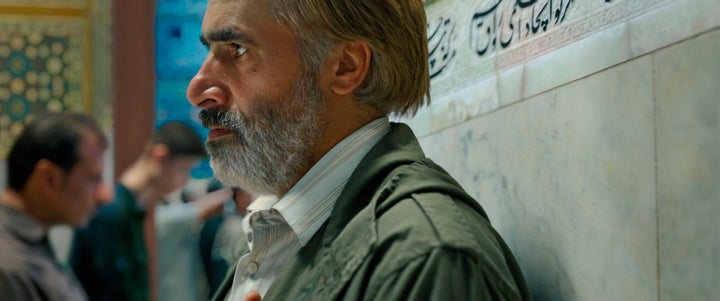
“There are different ways of looking [at it],” the filmmaker said. “For me, I have a filmmaker brain. But I also have a more, let’s say, theoretical brain. And the theoretical part of me is this hard line between what is reality, what is not, it’s really not accurate.”
Because there’s an often binary discussion of it as it pertains to filmmakers’ approach. “I think this is really important: This movie is not all this true crime stuff. I think it’s important to say it has inspiration from reality, but it’s not the recounting of that person’s life.”
Most notably, Abassi and his team — including co-writer Afshin Kamran Bahrami — portray Rahimi going undercover as a sex worker to try to catch the killer in the act. The journalist doesn’t do this in reality.
While the real-life journalist does subsequently attend Hanaei’s trials, as Rahimi does in the film, the events that occur once the character goes undercover are actually things that happen to a victim that ran away from Hanaei. She helped bring him to justice.
“That’s, I think, the biggest fictionalization decision we made, to take some distance from the facts of the actual case,” Abassi said. “Because this movie [is] about misogyny, I think it was important that these dots are connected.”
For the director, that meant also showing the audience the minutiae of misogyny. Like the early scene with Rahimi trying to get the key to her room. Or even when she narrowly escapes the killer after he picks her up on the street. In his home, where he conducts the murders, she removes her head scarf, dons red lipstick and even lights a cigarette.
The audience knows that Rahimi does not exactly fit the killer’s profile because she’s not a sex worker. But she’s vulnerable nonetheless because of the way she presents herself.
“It’s the same character,” Abassi explained, “even if in reality they would be different. It felt like, ‘OK, if you feel the character of the woman being mistreated,’ I felt that was something that was beneficial for what I want to tell.”
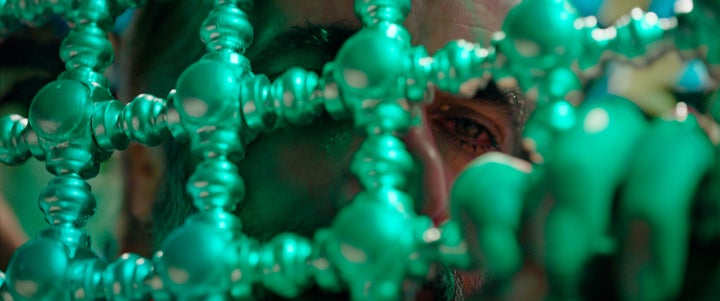
We don’t get much of Rahimi’s interiority, save for a brief scene where she’s painting her nails in her room and receives a call from her mother. But we still recognize her not merely as a symbol but as an identifiable person who comes to Mashhad with a professional reputation that’s been sullied by misogyny.
Like the killer’s victims, themselves performing work met with persecution, Rahimi is not a simple protagonist.
That was crucial for Abassi. “I think the really important thing was — and this is something we really struggled with — not to make her a hero. Not to make her the bearer of the truth, and a perfect person, and a victim of the system. All that is true, but I think she’s also a human being.”
The same can be said about the killer in the film, a character with which some audiences might struggle. Because Saeed, eerily portrayed by Mehdi Bajestani when many Iranian actors didn’t even want to touch this material, is both the family man that he was in real life as well as the cold-blooded murderer he also was, prowling the streets at night for his next victim.
It’s a difficult dichotomy to witness, but also disturbingly realistic.
“From the beginning, what I thought the really mysterious thing about this whole case was not that there was this guy who was walking around in the shadows, and being a brilliant, twisted mind,” Abassi explained.
It was important for the filmmaker that Saeed didn’t come off as “a crazy guy.” But rather someone who could have really been any other man in Mashhad at the time, sharing intimate revelations with friends, eating dinner at home. But obviously, also with a dark side shrouded in the idea that he is performing Allah’s work.
“The whole thing was him being very normal, and having three kids and being a good father and all that. For me, that was a real fascination, actually. I wasn’t as fascinated as how he killed people, because I think that’s a pretty straightforward procedure in a way.”
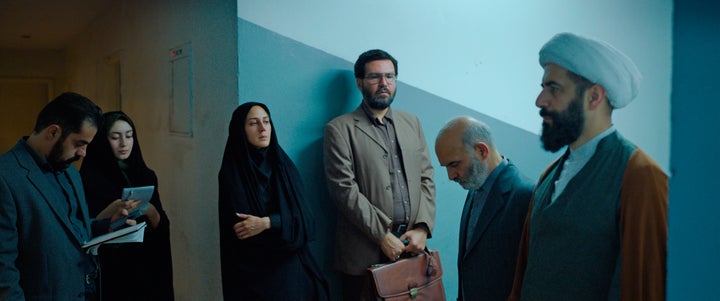
And Abassi spares no details in the murder scenes. Saeed lures each woman to his place and, once her back is turned, strangles her with her own head scarf.
In keeping with his panoramic storytelling, “Holy Spider” spends some time reflecting on the aftermath of a victim’s death with her family — some of the women were mothers and each was someone’s daughter — and the complicated responses to the way she lived her life.
There’s sincere grief, anguish and bewilderment that surrounds the women’s murders just as there is for Saeed’s conviction in the film.
That’s not to say these two things are conflated in the story. Far from it, actually. But there’s an honest and necessary reflection of the complex human impact and the way some people make concessions for a killer and his victims’ deaths in the name of a religious order.
A lot of it also comes down to understanding the ways in which women are compelled to live in this society. Particularly in the scene where Saeed and his wife have sex on the floor of their home or the scenes with the sex workers, Abassi wanted to take a closer look at how these women move in this world. And that called for finding actors who felt comfortable to perform it.
He’d even go as far to give the film a “political mission,” as he put it, “to break the representation of women in Iranian cinema — that representation in the world, really.”
“Because for 40-plus years, I think the Iranian government has mounted probably the most successful censorship operation ever in the history of the world,” he continued, “where they actually got people to believe that women in Iran sleep with their headscarves on.”
Clearly this is a cause about which Abassi feels passionately. “And they don’t never move, they never eat, they never fart,” he went on. “Like, they don’t have a body, don’t touch anyone, have no sexuality, and no physics. We wanted to make that very concrete and very clear that they have bodies. So there was a context to that.”
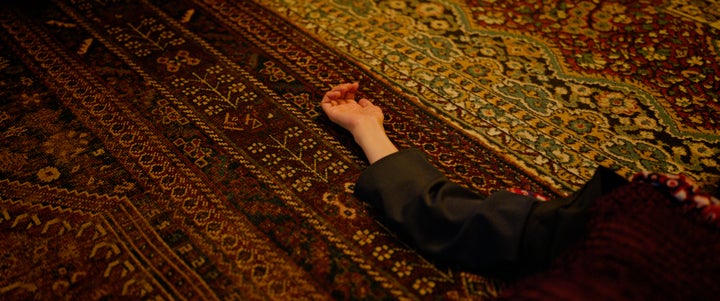
It makes the women’s deaths even more difficult to watch on the big screen. That is particularly true right now when Amini’s death and the reignited conversation around the morality police in Iran have sparked protests across the country.
While Abassi realizes that once a film enters the world, it takes on a new life of its own and is recontextualized based on whatever is going on in the current moment, he finds the pressure to speak on it a challenge.
“I think it has sort of put me in a tricky situation because I really don’t want to serve [this way],” he said. “I’m really, really happy if anyone watches the movie and gets informed about Iranian affairs. I think it’s a win for me, already.”
There’s another side to this, though.
“But then as a filmmaker, I really feel strange about being too much drawn into this conversation about, Is this real? How much of it is real? Is this [a] political thing? Because, now I have the hat of a political activist, and now I have the hat of the film director, and they’re really different.”
These days, Abassi constantly finds himself walking this line. Including on the day of this interview, he continues to reckon with that.
“There comes a moment when no matter how much you say you don’t want to get involved in politics, which I’ve said for a long time, if you don’t show some sensitivities to what’s going on around you…” Abassi began.
He slightly interrupted himself to point to a real-life instance that entered his mind just as he was grappling with this.
“ … And at this time when a 16-year-old is killed — and there’s a smashed skull, they steal her body from the parent, and then they shoot at the relatives who want to come and mourn, and threaten the mother to come on TV and say that her kid was mentally ill.”
Abassi reaches his conclusion: “And when somebody asks that question over so many of those limits, I think my preference is about how to deal with them and how it doesn’t matter anymore. So, if I can use my shoe to push this on, I do. If I can use my movie, I will. If I can use my fingers, I would.”
